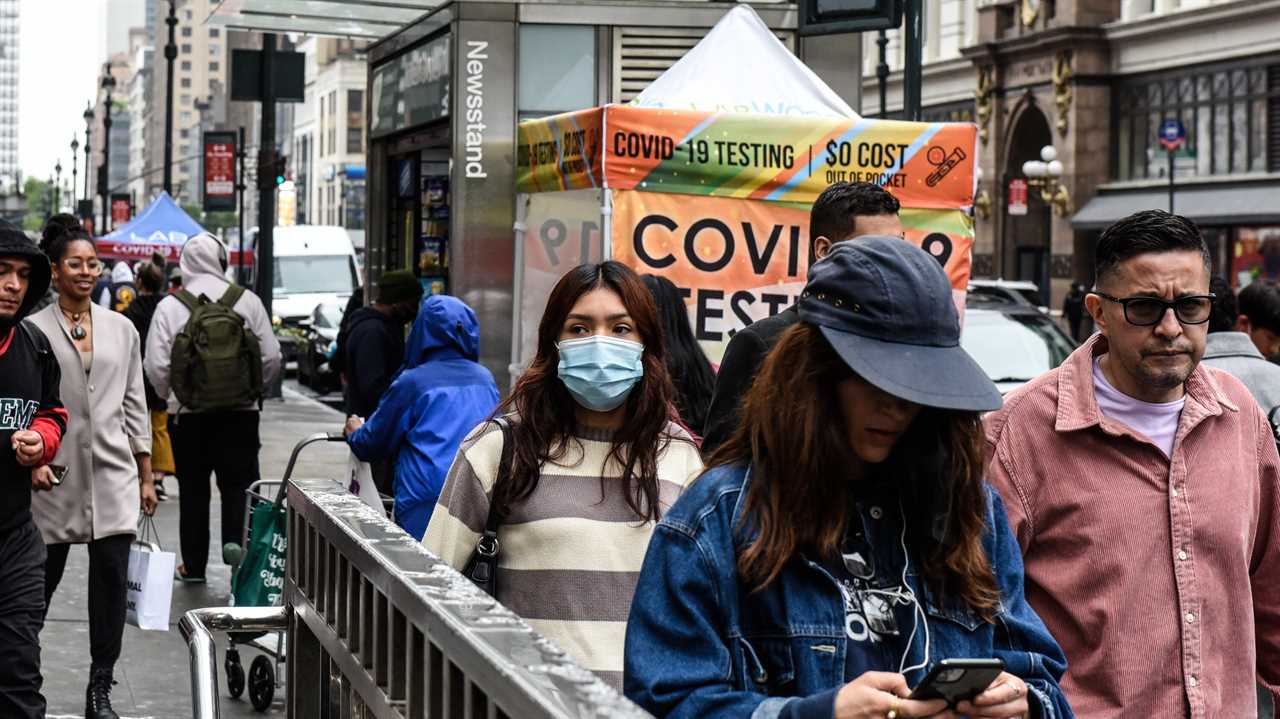
The White House is stepping up its warnings about a coronavirus surge this fall and winter, and is making contingency plans for how it will provide vaccines to the American public if Congress does not allocate more money for the Covid-19 response, according to a senior administration official.
With prospects for a fresh round of emergency coronavirus aid appearing shaky on Capitol Hill, administration officials met this week with key senators — including two leading Republicans — to press their case. Democrats have been contemplating wrapping Covid aid into another emergency package for Ukraine, but it was unclear whether they will do so.
The White House has been asking Congress for $22.5 billion in emergency aid to continue responding to the pandemic, but Republicans have insisted on a much lower number — $10 billion — and have stripped $5 billion in global aid from the request. Republicans are also insisting that the Biden administration suspend its plans to lift a public health order known as Title 42, which authorities have used to deport asylum-seekers during the pandemic.
The Biden administration is preparing for the possibility that 100 million Americans — roughly 30 percent of the population — will get infected with the coronavirus this fall and winter, according to the administration official, who spoke on condition of anonymity.
The 100 million figure is not as high as the total number of Americans known to have become infected with the highly contagious Omicron variant during the wave in December and January. It is based on a range of outside models, though the official did not specify which ones, and assumes that a rapidly evolving virus in the Omicron family — not a new variant — will spread through a population with waning immunity against infection.
The 100 million figure, which the official described as a median of what could be expected, also assumes a lack of federal resources if Congress does not approve any more money for tests, therapeutics and vaccines, and that many vaccinated and previously infected people would become infected again.
Should that scenario play out, the administration’s goal is to prevent a spike in hospitalizations and deaths. One way that might be accomplished would be to revive mask mandates, the official said.
A report last week by the Centers for Disease Control and Prevention said 60 percent of Americans, including 75 percent of children, had been infected with the coronavirus by February, and that the Omicron variant was responsible for much of the toll.
The official predicted the next coronavirus wave in the United States would begin this summer in the South, with a significant number of infections as people move indoors to escape the heat. In the fall, it would begin to spread across the rest of the country, particularly the north, although the spike in cases would not be as steep.
After dropping substantially after the winter Omicron surge, new confirmed U.S. cases have been rising again. As of Thursday, the average of new U.S. cases had reached about 68,000 a day, an increase of 59 percent over the past two weeks, according to a New York Times database, though infections are thought to be undercounted, especially with access to at-home testing. Hospitalizations are also ticking back up nationally, with an average of more than 18,000 people with the coronavirus in U.S. hospitals, an increase of 20 percent from two weeks ago.
If Congress does not approve more money for the domestic response, the official said, the administration would use funds designated for testing and therapeutics to develop a bare-bones vaccination program that would cover just older Americans and those with compromised immune systems. Officials have said they cannot provide enough boosters for the general population in the fall without more funding.
Both Moderna and Pfizer are now working on so-called “bivalent vaccines” that can protect against some known variants. If those vaccines are authorized by federal regulators in time, and a substantial number of Americans take them or get booster shots that are already authorized, the official said, the fatality rate should mirror that of the flu, with fewer than one tenth of people who get infected succumbing to the virus. But if access to vaccines is limited, the United States could see hundreds of thousands of deaths, the official said.
Last month, a panel of outside experts who make recommendations to federal regulators grappled with the challenges involved in revamping vaccines, including when such decisions might be made and the uncertainty of which variant of the virus could be dominant in the fall.
The official said testing will be a particular challenge. Test makers are already laying off employees as demand for rapid at-home testing drops. The Strategic National Stockpile needs 1 billion rapid tests going into the fall, but will have only 400 to 500 million without additional funding, the official said.
Emily Cochrane contributed reporting.






